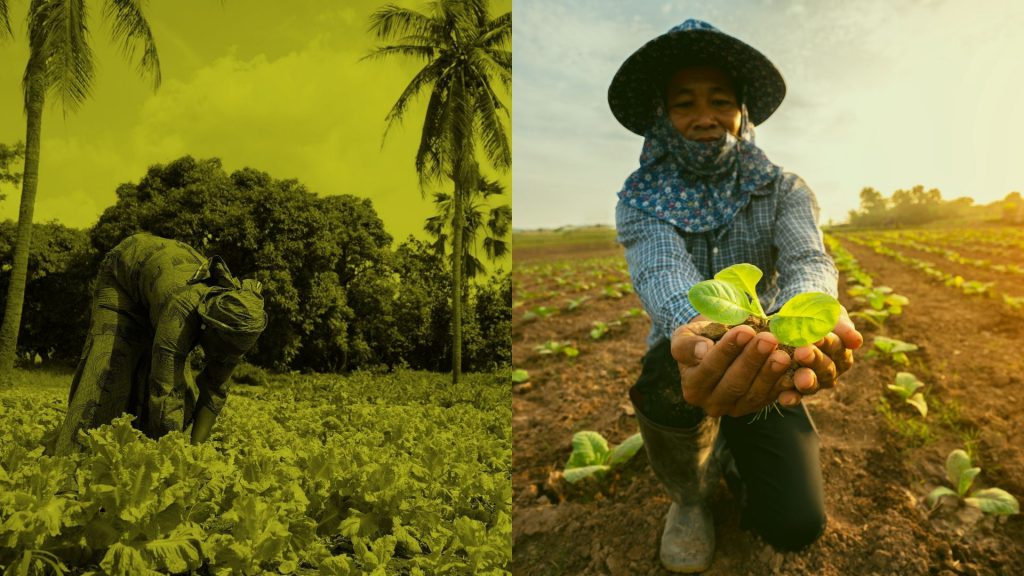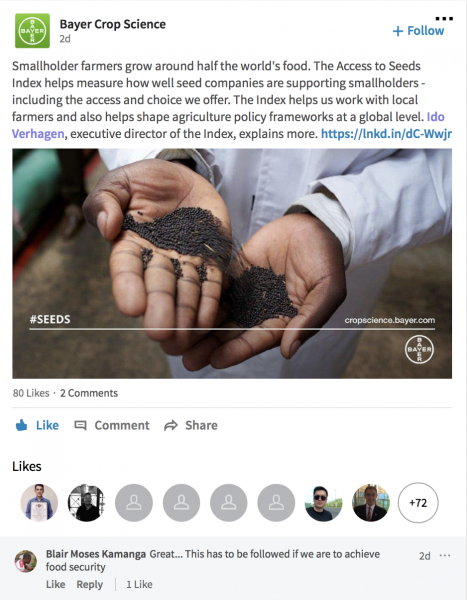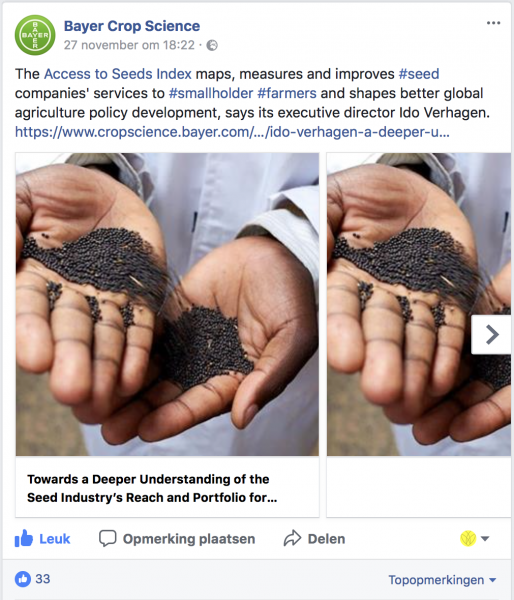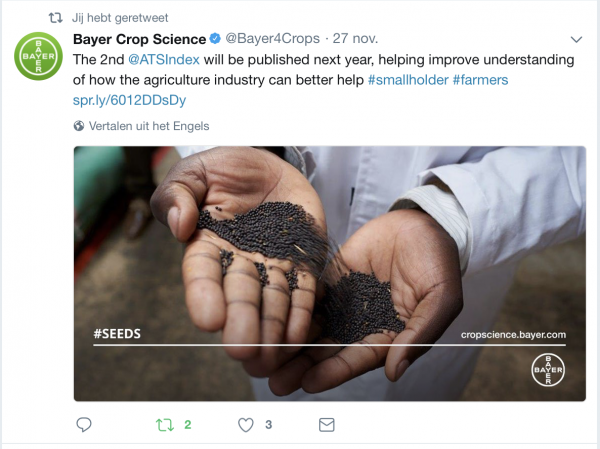The Access to Seeds Index, as an industry benchmark, gives credit to individual companies demonstrating leadership in supporting smallholder farmer productivity. More importantly, the data also provides insight on how the industry is performing as a collective. The coming Access to Seeds Index takes this work one step further.
Against the backdrop of the UN General Assembly last September, world leaders gathered in the New York Public Library to launch the World Benchmark Alliance: a new initiative to track and boost the contribution of the private sector to global sustainable development. To explore how industries are working towards achieving the Sustainable Development Goals, a series of new industry benchmarks will be created in the coming years.
At this occasion, the Dutch Minister for Aid and Trade reminded the audience some industry benchmarks have already set an example, like the Access to Medicine Index and Access to Seeds Index. The latter started in 2012 as a growing resource on how the seed industry is contributing to smallholder farmer productivity, which involves more than producing a ranking with one winner.
Of course, measuring and comparing the activities of individual companies is what benchmarks do. It gives credit to companies that show leadership, and shines a light on good practice that can be an inspiration for others. But there is more to it.
Collecting data from companies on how they are servicing smallholder farmers also contributes to industry-level insights on whether the industry as a collective is providing access and choice to smallholder farmers. This is where the second edition of the Access to Seeds Index, scheduled for publication at the end of 2018, aims to take it one step further.
The first Access to Seeds Index showed that global seed companies – West Africa excepted – are active in the regions where smallholders dominate the agricultural landscape. These companies are working on more crops than just maize, as is often claimed. The Index also showed that regional companies further expand the industry’s reach and broaden its portfolio by selling seeds for crops not yet covered by their global peers.
Proximity to smallholders is a good start, but does it also mean that smallholder farmers have access and choice? Over the past year, stakeholders and experts were consulted to review the methodology and have suggested a number of robust indicators.
Regarding access, knowing what is the age of the latest variety released in the market helps us track whether newest releases from breeding programs are brought to the market and therefore made accessible. Regarding choice, the number of varieties and package sizes available in the market tracks whether a given company portfolio provides choice and is tailored to the needs of smallholders. Also, information on the number of active breeders and agronomists in markets will indicate the strength of both breeding and extension activities. In short, where the first Index provided a qualitative baseline, the next edition takes a more quantitative approach.
From our engagement with seed companies over the years, we know they are supporting smallholder farmer productivity more than what is publicly known. Deeper insight and understanding will help to inform policy makers and the industry itself to identify gaps towards achieving the Sustainable Development Goals.
This blog by was published on the Bayer Crop Science blog platform.







